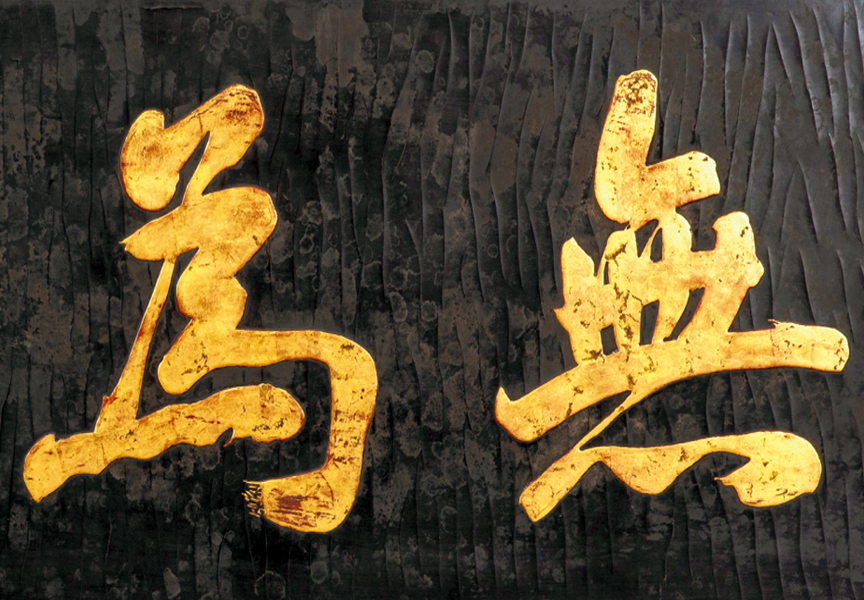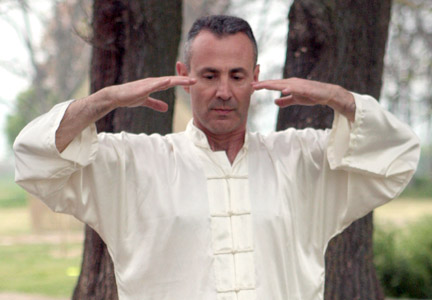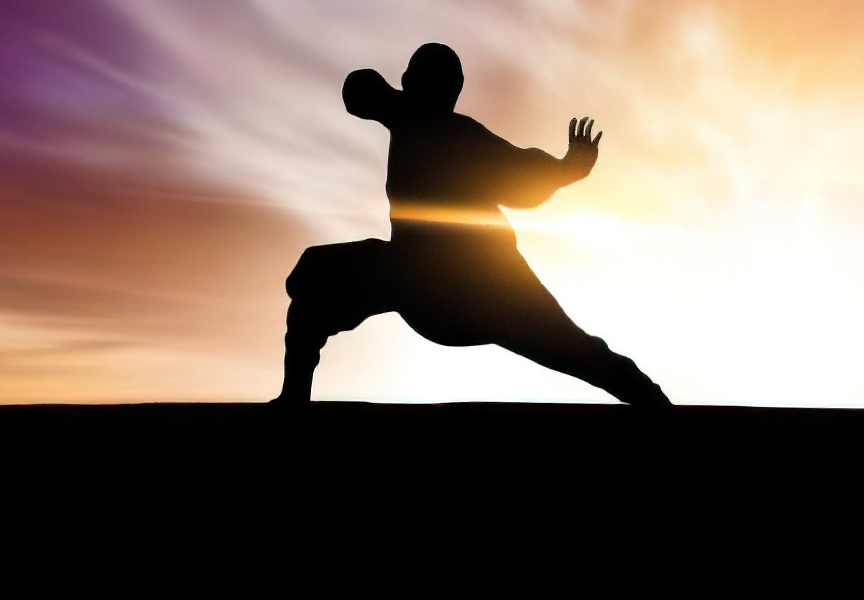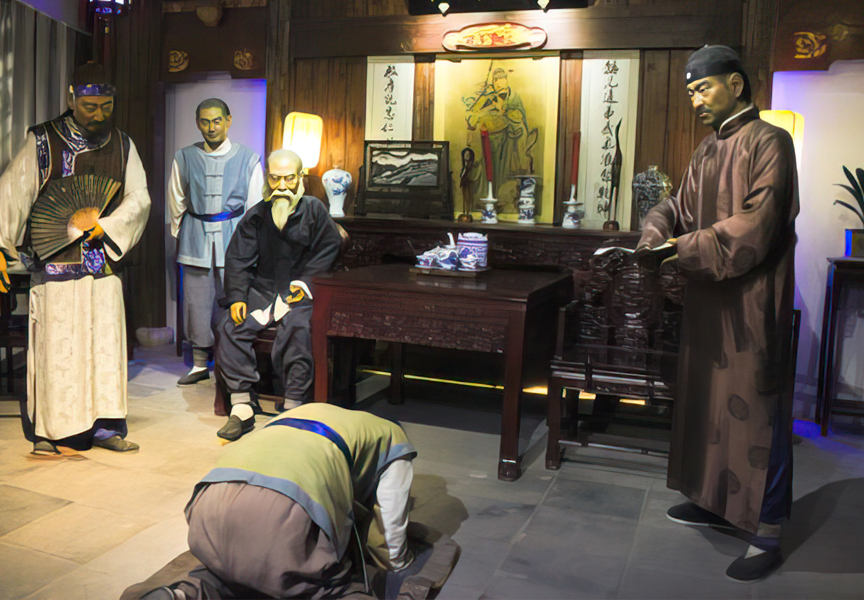Shaolin Ying Qigong or Hard Qigong as it is referred to in English, is a Shaolin Martial Art art and has been around for many hundreds of years. It was originally used to train the body to withstand strong blows and attacks in the days when there were no guns but only the traditional Chinese weapons of spears, broadswords and knives. Qigong has both extensive and profound knowledge of the cultivation of the human body. Shaolin Ying Qigong can be considered an independent qigong Art or even better as an independent Martial Art art. Why? Because it has gone through a process of several thousand years with a complete system of cultivation theories as well as that of cultivation methods, it can be regarded as an integrated system. Nevertheless, Shaolin Ying Qigong also remains something belonging to the lowest level of inner cultivation ways.
Shaolin Ying Qigong is a form of energy mass of matter which is not just concerned with building muscles and developing power. It has both a soft and hard side. The hard side involves training the muscle, skin and bones and this includes repetitive striking of the body with the hands, special bamboo poles and iron bars along with special stances and breathing techniques. The soft side is the meditation. Without meditation, we will not be able to cool down the fire that is created with the exercises Shaolin Ying Qigong. So this is a very important part of the training and should not be neglected.
You sit with eyes closed and away from noise,
Harmony of Qi helps build up skin and muscles.
You seem drunk with fine wine, Stirring only slightly as if in hibernation.
You look calm, While blood and Qi flow freely throughout.
You think no more,
With heart and mind in a state of nothingness and emptiness.
- Bai Ju Yi (Tang Dynasty)
Classification of the Qigong
Shaolin Qi Gong is classified as (Ruan Qigong) internal Qi exercises and (Ying Qigong) hard Qi exercises.
The Ruan Qigong can strengthen the human's body by inhaling and exhausting of Qi to circulate the blood vessel and activate the arteries and veins in the human body. These kinds of Qi Gong include: Ba Duan Jin, Yi Jin Jing, Chan Yuan Gong, Luohan Qigong, Sitting Meditation, etc.
The External Shaolin Qigong is the Hard Qigong, which have a number of categories. The Ying Qigong works through direct the inner Qi to a certain part of the human body to make this part have extremely power, such as Splitting Stick on Head, Breaking Stone with Palm, Crushing Stone with feet, etc., these are all because of the power of External Qigong.
The Iron Cotton-Coat Qigong, Iron-Belly Qigong, Two-Fingers Qigong are all famous Shaolin External Qigong.
How is Shaolin Ying Qigong practiced specifically?
Practicing Shaolin Ying Qigong requires the exercise of qi. However, it is not easy to do that at the beginning. Though you want to exercise qi, you can not do it as you wish. What will you do then? You will have to exercise your hands, your two sides of the body, feet, legs, arms, and head by using a shai dai (a small bag that is filled with pellets and special herbs).
How should you exercise qi?
Ying Qi Gong must be taught by a Shaolin Master to ensure safety.
Some people strike a tree with their hands or feet or even their head. Some people strike a rock with their hands or their head. How painful it is for the bones as they bleed with just a little effort. Still, the qi can not be directed. What should be done then?
One will start to swing his arms until his hands and arms become swollen by making the blood circulate in the opposite direction. In fact, they have become swollen. After that, his bones will be padded when he hits a rock. Since his bones cannot directly contact the rock, they will not feel pain. As he continues to practice, his master will teach him. As time passes by, he will learn how to direct qi.
Directing qi is enough?
However, the ability to direct qi alone is not good enough as the opponent will not wait for you in real combat. Of course, when one is able to direct qi, he will be able to resist blows, and probably not feel pain when hit with a thick stick. After he has directed qi to a certain part of the body, it swells up. Yet, this is the most primitive matter at the beginning, and can be transformed into the high energy matter as he continues his practice.
When this transformation is completed, this qi will gradually form a huge supernormal capability energy mass. Such a supernormal capability is specialized for striking and the protection from striking. It will not work if used to treat disease.
When you hit another person, you do not need to direct qi, or to think of it because your energy has reached there already. When you try to ward off someone's blow, the energy also has reached there already. No matter how quickly you throw a blow, the energy will move faster than you as the concepts of time are different on both sides. Through practicing Shaolin Ying Qigong, one may develop something like Iron Palm, Vajra or Arhat Leg, which are the skills of ordinary people. An ordinary person will be able to attain such skills through exercises.
The major difference between Shaolin Ying Qigong and the inner cultivation way is that: Shaolin Ying Qigong requires practice in motion. Therefore, qi travels under the skin. Because it requires practice in motion, one can not reach the state of tranquility, nor can his qi enter Dantian (the elixir field). His qi moves under the skin and through the muscles. Therefore, he can not cultivate his life, nor can he cultivate the high attainment of Martial Art. Our inner cultivation way requires the practice to be in the state of tranquility. Conventional cultivation ways require qi to enter Dantian and the abdomen area. They require practice in the state of tranquility as well as the transformation of Benti (the True Self), which enables one to cultivate life and to reach high level cultivation.
Excerpt from the Book
"Shaolin Monastery - 1,500 Years Unknown Culture»
ISBN: 978-618-80566-2-6
Posted by Author's permission





